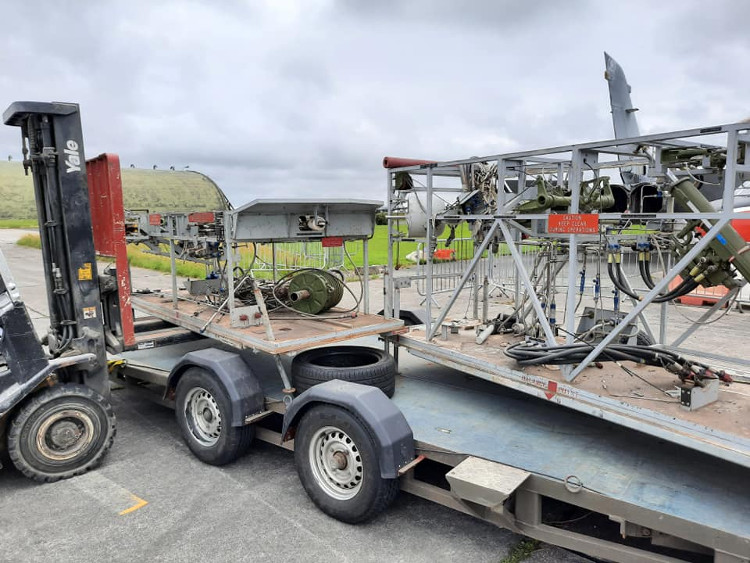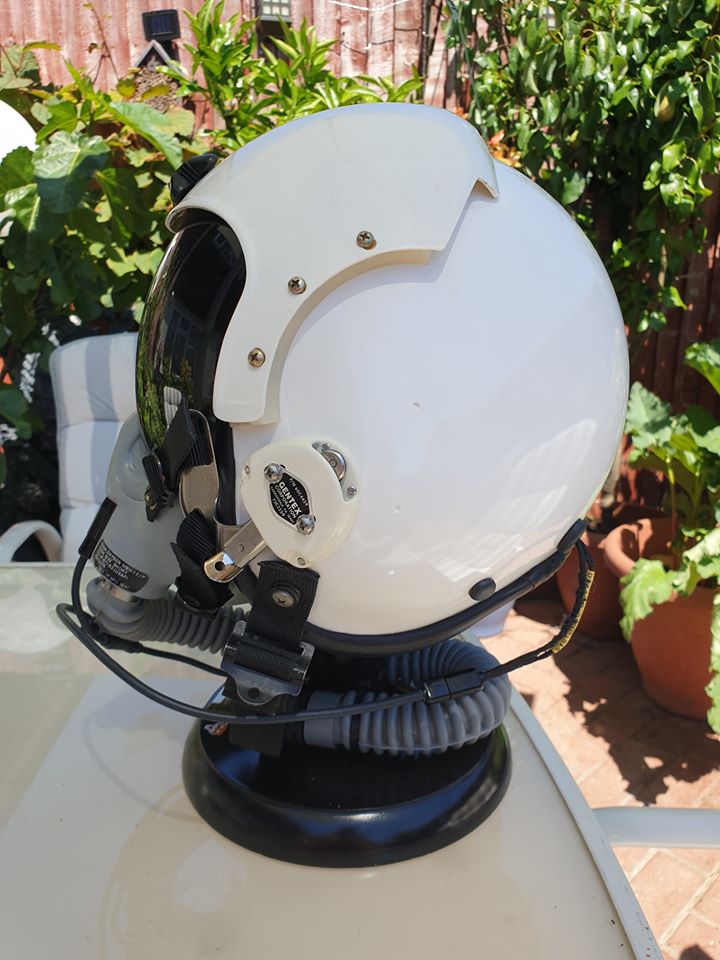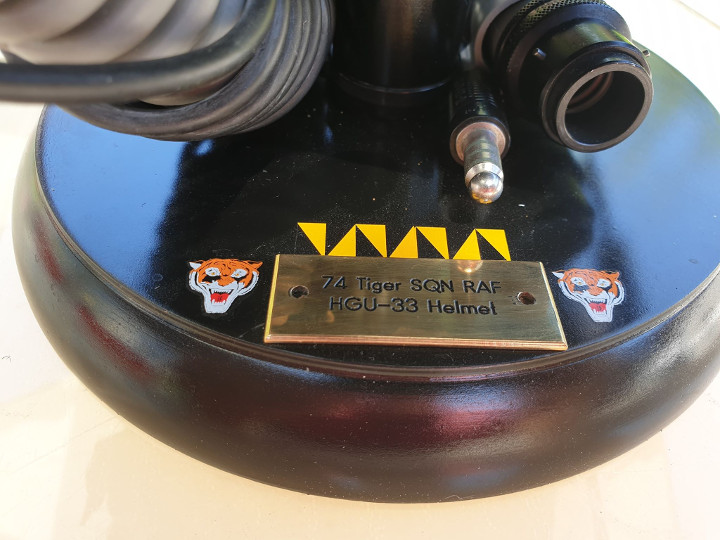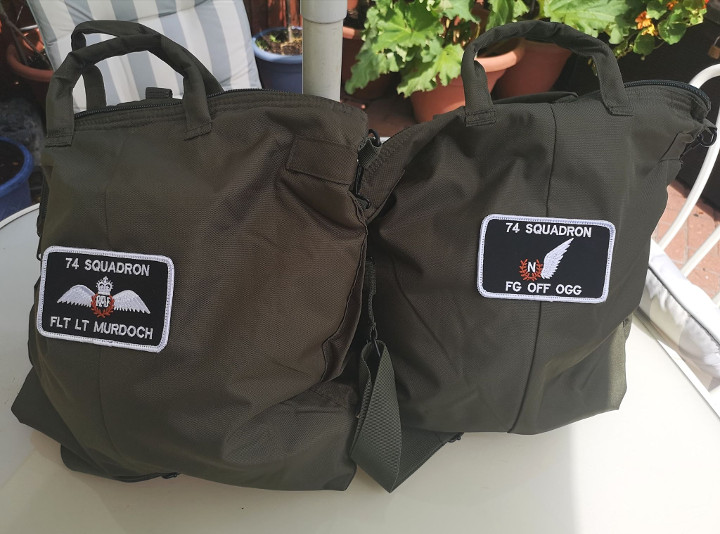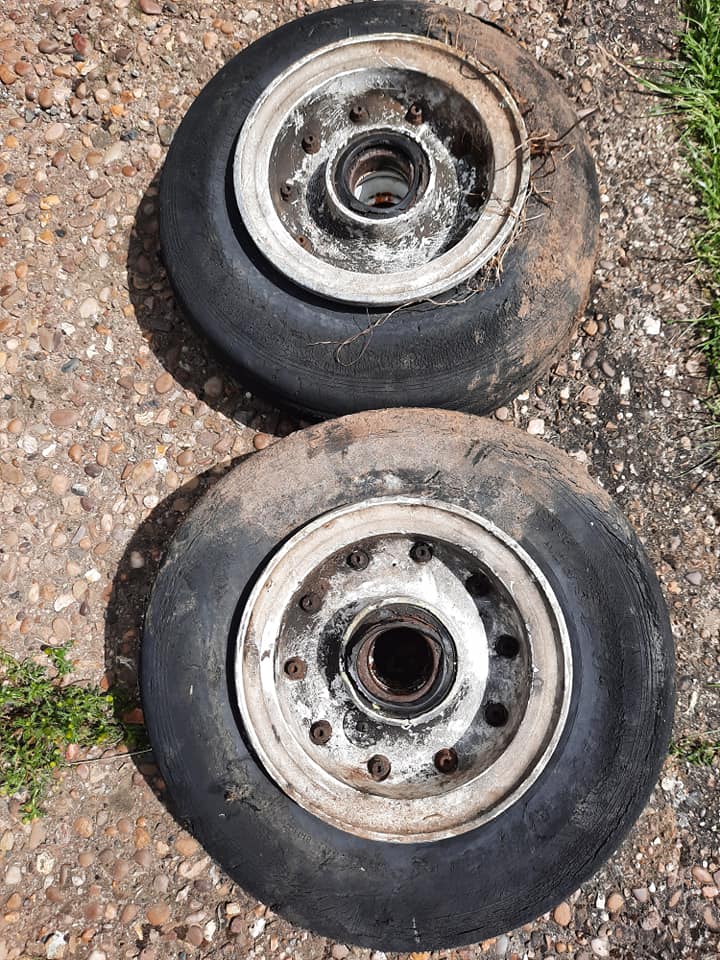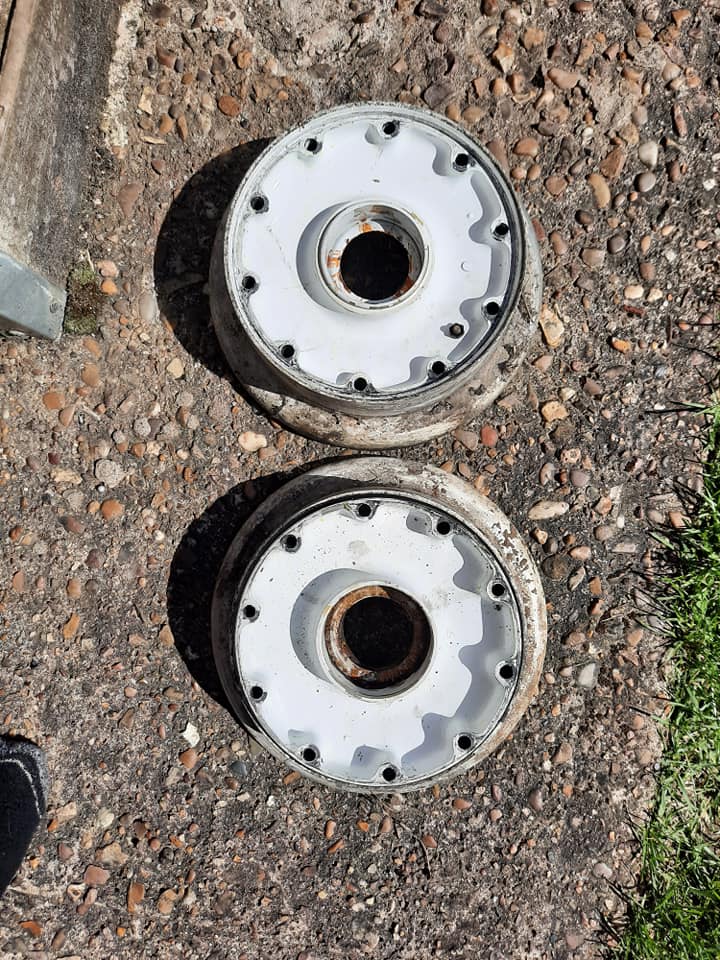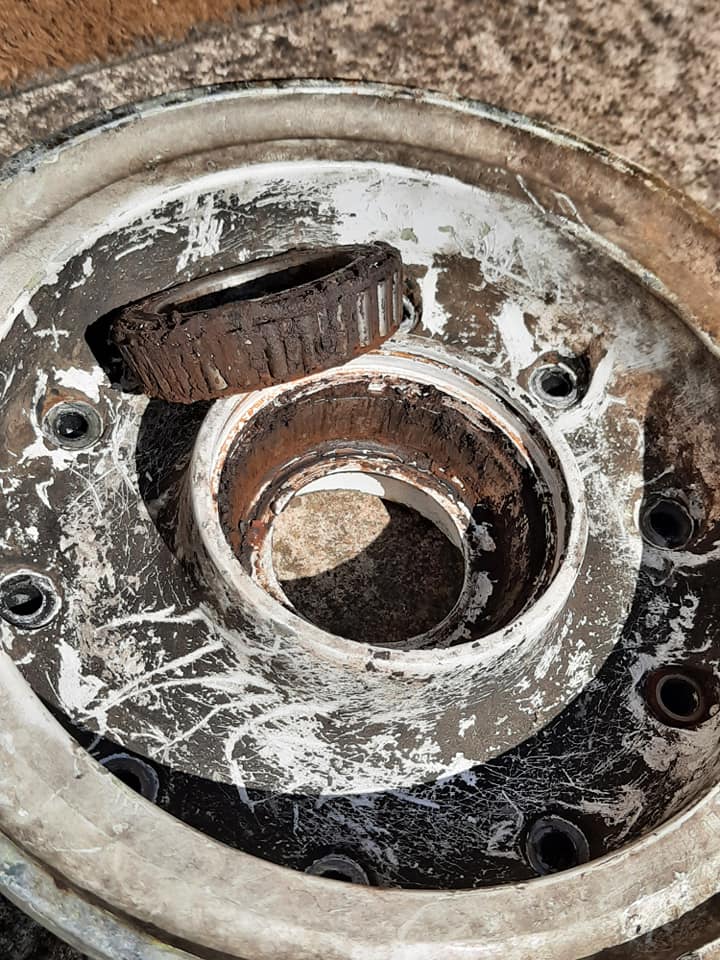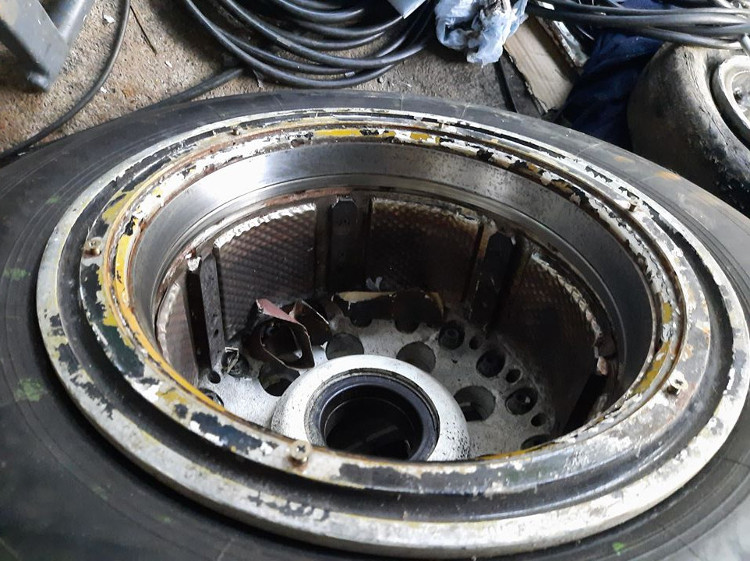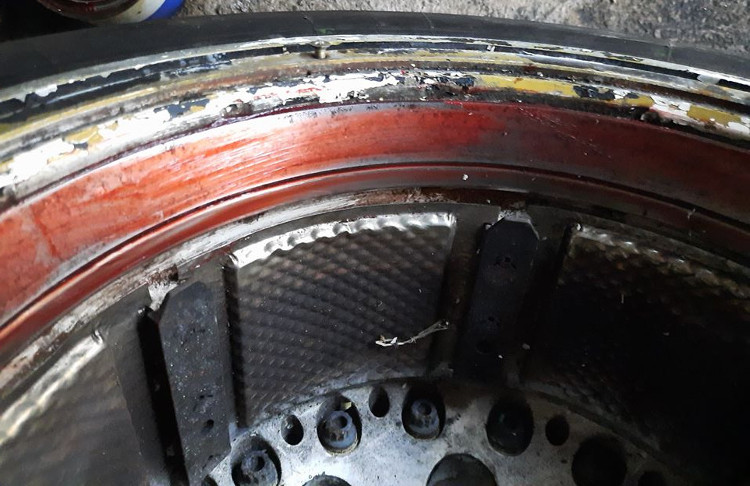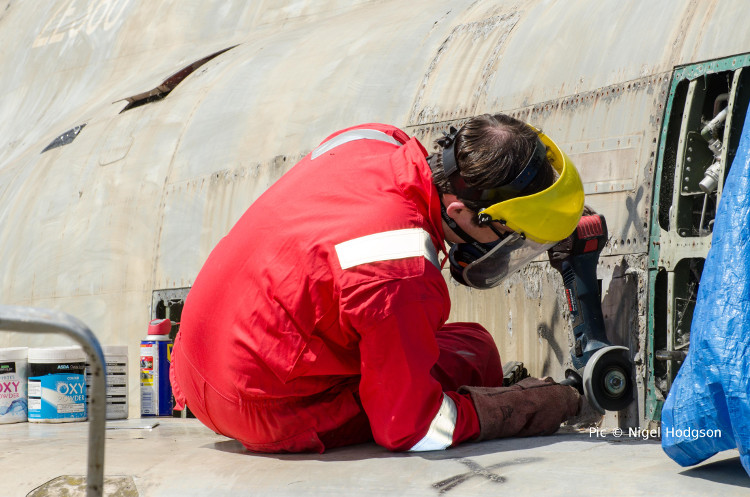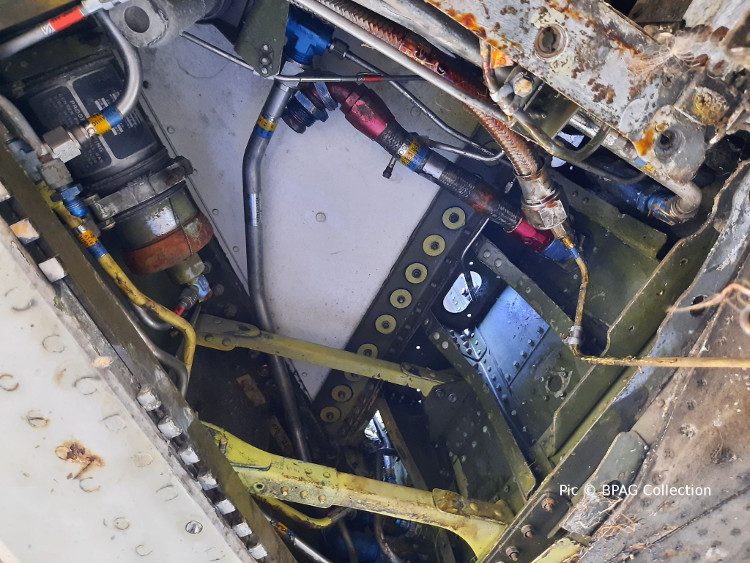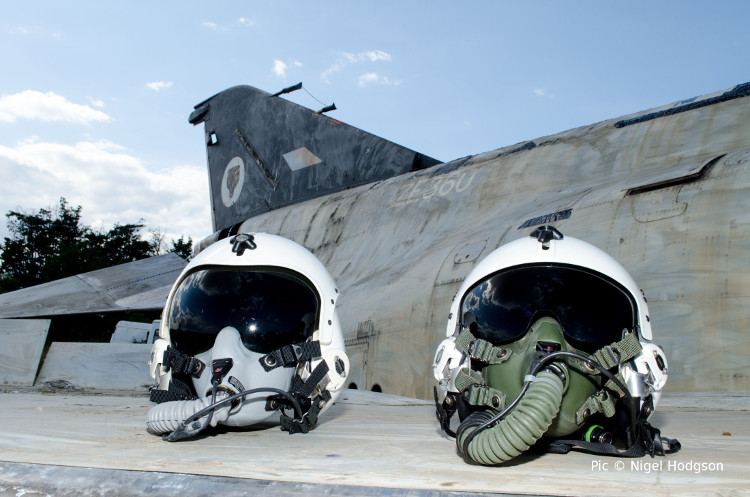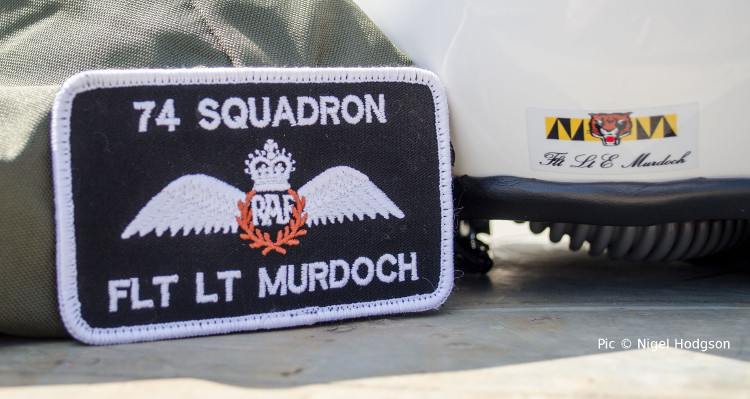
Side panel removal is continuing successfully, despite corroded fasteners eating through drill bits in a matter of minutes and the tailcone is now also partially disassembled.



The RH aileron finally gave up its fight to stay in place and was removed and we have gained access to the leading edge flap actuators on both sides.


However, the biggest achievement of the weekend, which simultaneously gave us a milestone moment and an end to a major area of concern, was the replacement of both mainwheels. Using a custom built puller fabricated by the BPAG, the LH was the easiest of the two to remove, exposing the brake pack (which is free enough for towing purposes but will need cleaning and restoring later) pressure plate and bearing, which is turning nicely. RH wheel put up more resistance and had to be forced free with old fashioned muscle power. RH brake pack seized unfortunately so had to be disassembled for further attention. RH bearing also turning OK but will need around 10 new rollers due to damage from water ingress.


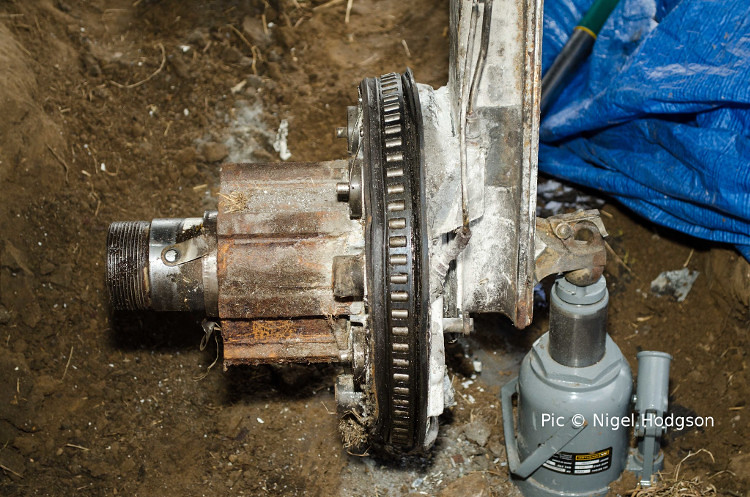

With the main wheel replacement taking priority, the outer wing and CL tank removal had to be left for another time. This was a price worth paying though, as resolution of the wheel issue has removed what could have potentially been either a serious hinderance to the restoration effort or, in the worst case, put it in jeopardy entirely. We are all collectively breathing a sigh of relief. Many thanks to all our volunteers for giving up their weekend to further the cause. Thanks also to Tony Clay & Nigel Hodgson for the photos.
Finally, needless to say, all this activity unfortunately comes at a price. Our volunteers are generous enough to meet their own expenses and provide their own tools and materials but the aircraft still requires parts, equipment and resources that we will have to provide. So, this is a general appeal for support. The BPAG and the 74 Sqn Association would be extremely grateful if you would consider donating funds to the ZE360 Restoration Fund. Any amount, however small, will be much appreciated and will really make a difference. You can donate via bank transfer to the following-
Account Name – Tiger360
Sort Code – 30-96-26
Acct. Number – 53212368
Alternatively, donations can be sent via PayPal to the BPAG merchandise address- phantomerchandise@outlook.com Please include a note that your donation is for ZE360.
We have reached a landmark point now that the main wheels are changed and with your support, we can reach the next one and be closer to moving the aircraft to safety. You are all as much a part of this as we are. Thank you.














